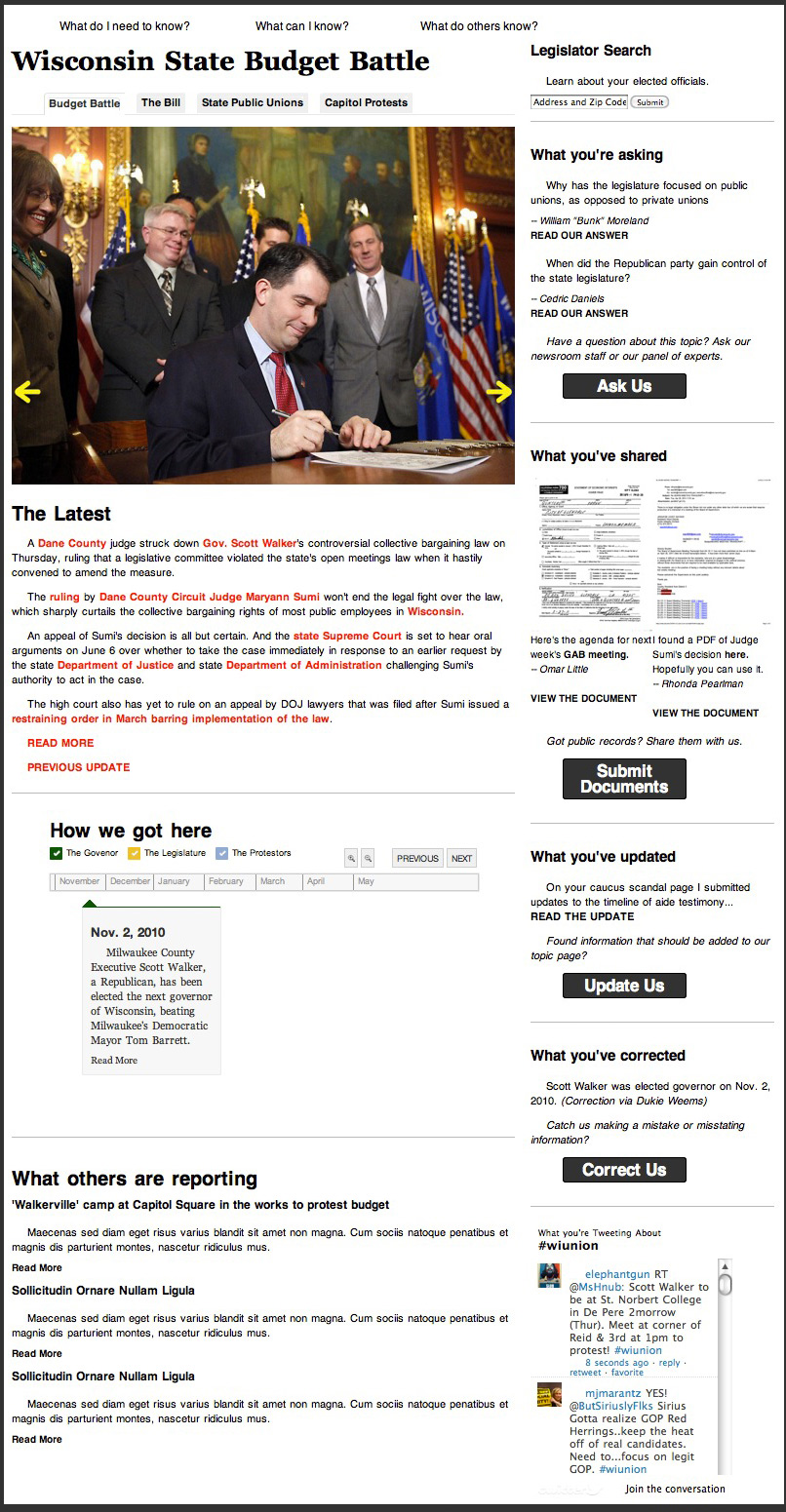“DRY” Approach to News
SUMMARY
- Time to remember that in the hectic 24-hour news cycle, stories come and go, but issues and topics live on forever.
- Time to provide front-end users with a deeper, richer and more robust interaction with news that affects them and give back-end journalists and content gatherers tools to re-focus their efforts on reporting and utilizing a crowd of experts to add value and context to topics and issues.
- Time to cultivate a “DRY” mindset for journalists and content gatherers who are left to dig up background paragraphs from the last story, update with new information or change them slightly, but leave the original stories outdated and without new-found context and information.
Put simply: We don’t need more Lego sets. We need to play with the Legos we have, use them as building blocks and put them together in a way that takes aspects of leading online content services and leads to a new presentation and content-gathering model.
DESCRIPTION
At mainstream media organizations, articles and reports remain the cornerstone of each day’s efforts.
Sure, we’ve all contributed to videos, timelines, blogs, graphics and interactives to bolster the online product. We’ve gotten into various social media streams and user contributed content, so we have Twitter accounts, story comments, link sharing, Facebook posting and more. We’ve gotten smarter with technology, so we have news and data apps and content aggregation and A/B testing.
But these media organizations have struggled to keep articles and reports from becoming the “rough draft of history,” pieces of content that are left to become an isolated event that lacks background and new information that is accumulated during subsequent reporting and content gathering.
Let’s take Document Cloud, Google’s Living Stories – a great idea not fully executed – Mother Jones’explainer pieces, the Guardian’s topic pages, and aspects of Wikipedia and Quora, and mash them together into a desktop and mobile user experience that brings depth, context and credibility to the news through authoritative voices, primary sources, professional reporting and user tips, which will take the form of topical pages or explainer pieces that cater to different type of news consumers.
THE DETAILS
Each topical page would contain:
- An introductory level that offers a quick overview – what has happened, what is happening and what comes next – for those who want to know enough, but are satisfied with cursory knowledge of a subject.
- An intermediate level that builds on and adds depth and context to a subject, while offering gaming mechanics and reward systems for those interested in contributing to the subject. These users can also open a topic file that others can add to while a staff journalist or beat reporters guides the discussion toward fact-based news gathering practices.
- An expert level that where trusted, credible users, experts in their respective fields and professional journalists create an compendium of authoritative information on a subject based on daily and enterprise reporting and curated social media streams.
- At each level users will have access to links, video, data, source documents and records, photos about the subject, in addition to the opportunity to contribute, ask questions and offer insight into the subject.
THE THEORETICAL RESULTS
With interplay between these levels, daily news reports can’t help but become living, breathing entities and reference points for future news coverage.
Put another way, these topical pages become – as Jeff Jarvis puts it – “a thing that is curated, edited and discussed. A blog that treats a topic as an ongoing process of learning, digging, correcting, asking, answering… It’s a discussion that tries to accomplish something.”
For the journalist, that discussion becomes a means to answering the questions that should greet journalists each day during the reporting process:
- Did I provide the user with more context and information about my beat than I did yesterday?
- What have I learned about the subject since I began writing about it?
- Have I communicated it effectively?
- Is my work closer to becoming the definitive source of information on this subject?
For the front-end user, that discussion is a means to become more informed about issues of interest – whether local, national or international – and contribute to their community in a meaningful, action-oriented way. Instead of being a consumer of news they become a collaborator in the content-gathering process.
It might look something like this.
